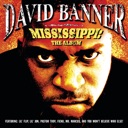Rap/Hip-Hop
G-MAN Park Jam in the Bronx
Photograph by Henry ChalfantKey Attributes of Rap/Hip-Hop
Select to filter timelineThemes
- Nightlife/Parties
- Community
- Economics/Poverty
- Dance
- Social Consciousness
Musical Features
- Call and Response
- Electronic Sounds
Instruments
- Electric Guitar
- Electric Piano/Synthesizer
- Other Electronic Instruments
Rap music is stylistically and lyrically diverse, representing a range of experiences and worldviews that characterize the multiple and changing voices among African American youth.
Rap is original poetry recited in rhythm and rhyme over prerecorded instrumental tracks. Rap music (also referred to as rap or hip-hop music) evolved in conjunction with the cultural movement called hip-hop. Rap emerged as a minimalist street sound against the backdrop of the heavily orchestrated and formulaic music coming from the local house parties to dance clubs in the early 1970s. Its earliest performers comprise MCs (derived from master of ceremonies but referring to the actual rapper) and DJs (who use and often manipulate pre-recorded tracks as a backdrop to the rap), break dancers and graffiti writers.
Context and History
Old School Roots: early 1970s to the mid-1980s
From its humble beginnings in the Bronx, NY, rap music has moved into the mainstream, redefining the soundscape and character of American popular culture and contributing to the growth of a billion-dollar entertainment industry. Hip-hop music culture is a product of African American, Afro-Caribbean and Latino inner-city communities plagued by poverty, the proliferation of drugs, and gang violence in the 1960s and early 1970s. Some MCs and DJs were members or former members of gangs who used DJing, dancing, and MCing as an alternative to gang warfare. DJ Kool Herc gave the community its blueprints and its first brand of hip-hop music, called b-beat. Hip-hop DJs and MCs originally performed in local house parties and community centers, city parks, neighborhood block parties, and, eventually, local clubs. By the mid-1970s, performance venues included local clubs whose proprietors recognized the commercial potential of this artistic expression. Record and film producers then noticed and began to capitalize on hip-hop culture. Sylvia Robinson of Sugarhill Records introduced rapping into the mainstream with the release of “Rapper’s Delight” (1979) by the Sugarhill Gang. In the 1980s several commercial hip-hop films such as Wild Style (1982), Style Wars (1983), Beat Street (1984), Krush Groove (1985) and Disorderlies (1987) flooded the market with the sound of rap. Major record companies formed partnerships with independent labels and producers specializing in rap music. MCing evolved into the rap music industry while DJing went underground and re-established itself as turntablism (the art of manipulating music with LP records and mixers to create unique rhythms and sounds). Changes to the musical production of hip-hop, along with growing stylistic diversity and advances in technology, led to the community-imposed concept of an old and new school. The “Old School” is associated with the period from the early 1970s to the mid-1980s. Initially, DJs were the featured attraction, juggling beats amplified through large sound speakers and shouting praises and catch-phrases to incite crowd participation. Pioneering DJs include Kool Herc and Afrika Bambaataa, Grand Wizard Theodore, Grandmaster Flash, and Grandmixer D.ST. When their musical collages and turntable manipulations became so complex that they required their full attention, DJs included a crew of MCs to engage and interact with the crowd of dancers. Grandmaster Flash transferred his street or live mixing style to the studio on “Grandmaster Flash on the Wheels of Steel” (1981). A year later, Afrika Bambaataa (“Planet Rock,” 1982) advanced the studio DJing tradition through the use of synthesizers, the 808 drum machine, computers, and analog and digital recording machines and other advanced technologies influenced by Kraftwerk’s “Trans-Europe Express” (1977), and “Numbers” (1981) coupled with funk aesthetics such as Captain Sky’s “Supersperm” (1978) and the rock-style of Babe Ruth Band’s “The Mexican” (1972).
The Golden Era: Commercialization and the New School Artists (mid-1980s to the mid-1990s)
“New School” rap was coined by the 2nd generation artist (1984) to distinguish the pop sensibilities of the first commercial generation of rap artists and ranged from the pop-oriented humorous style of the Fat Boys (“Jail House Rap,” 1984) and D.J. Jazzy Jeff and the Fresh Prince (“Parents Just Don’t Understand,” 1988) to the rock-oriented sounds of Run-D.M.C. (“Walk This Way,” 1986). Women rappers like Roxanne Shanté, Salt-n-Pepa, MC Lyte, and Queen Latifah introduced Black women’s point of view to rap fans and proved that they were as skilled and commercially successful as the men. The chaotic sounds of Public Enemy (It Takes a Nation of Millions to Hold Us Back, 1988) and N.W.A (Straight Outta Compton, 1988) became known as hardcore; the harsh lyrical content mirrored the deteriorating conditions of the inner-cities as evidenced by abandoned factories, boarded buildings, dilapidated houses, drug addicts, the homeless, and ongoing confrontations with the police. The hardcore sounds and lyrics of Public Enemy, Boogie Down Productions, and KRS-One became known as “conscious” rap (also known as “message” and “Afrocentric” rap); those of N.W.A, Ice-T, Ice-Cube, and Eazy-E were called “gangsta” rap. Both styles dominated the hip-hop soundscape through much of the 1990s, but gangsta took over in the 21st century, influencing the styles of Master P, 50 Cent, T.I. and Young Jeezy. Despite this domination, an array of hip-hop styles coexisted, including hybrid productions that fused elements of R&B and/or funk with the beats of hip-hop such as those by MC Hammer, Heavy D and the Boyz, Sean “Puffy” Combs, and Kid ‘n Play. Afrocentric and conscious rappers like Lauryn Hill, De La Soul, A Tribe Called Quest, and Gang Starr favored soul and jazz samples in their mixes.
Mainstreaming into the 21st Century: mid-1990s to the mid-2010s
In the 2000s, hip-hop music was mainstream. Kanye West’s production and lyricism redirected attention away from gangsta rap and explored a range of topics including his middle-class upbringing, anti-Black racism, corporatism, and his faith presented in full self-aggrandizing style. Additionally, Eminem will become a most revered lyricist, by rap artists and rap fans alike, breaking past an obstacle of white inauthenticity laid down by Vanilla Ice a decade earlier. Musically, music-making turned away from the East Coast and the West coast and found a new home in the South. Several epicenters develop influential styles: Miami (Miami bass), New Orleans (bounce), Houston (screwed), and Atlanta (crunk and trap). By the 2010s, socially conscious rap will crossover into the mainstream as R&B and rap artists respond to tension borne from increased police and vigilante shootings of unarmed Black men, women, and children, and from advances in technology for self-production and instant sharing through social media. Key artists include Kendrick Lamar, J. Cole, and Joey Bada$$. Equally important in the 2010s is the rise of female MCs as producers of critically acclaimed albums, proving once again that rap consumers will purchase their music. Women leading the trend include Nicky Minaj and Cardi B.
Musical Features/Performance Style
Old school rap is associated with a party-oriented musical and lyrical style as heard in Grandmaster Flash and the Furious Five’s “Birthday Party” (1981). Performers of the old school (early 1970s–mid-1980s) gained their reputations from live performances. Their recordings are characterized by the use of live bands and/or Latin-influenced percussion; the incorporation of scratching and other turntable effects; call-and-response chants between MCs and crowds; and lyrics delivered in rhymed couplets (A-A-B-B).
New school artists such as Eric B. and Rakim (“Eric B. is President,” 1987) added a virtuoso twist to the A-A-B-B scheme by employing internal rhymes that pair words in the middle of a line rather than simply at the end. The “new school” substituted the aggressive sounds of the street for the party sounds of the old school. This hard-edged aesthetic emphasized dissonance and a heavy backbeat, incorporating real sounds of inner-city life such as gunshots, sirens, street cries, and the occasional political speech. In the 1980s and ’90s, electronic and digital productions of hip-hop increasingly replaced live performances. Synthesizers, drum machines, and computers became the primary instruments and eventually sampled materials from various sources, especially funk, provided the foundation for new songs.
In the late 1990s some new school artists like the Roots and Guru began reincorporating live instruments into their recordings and during live performances, such as “Loungin’,” Guru’s collaboration with jazz great Donald Byrd on trumpet and piano. Others, like Dr. Dre, controlled the production tightly by utilizing the basics of classic funk songs, but slowing down the tempo for riding in a car (not dancing), adding menacing, bass-driven grooves (stripping funk’s bright sounds from the brass section), highlighted by integrating high-pitched synthesizer and chopped samples as in “Nothin’ But a ‘G’ Thang” (explicit). In the second millennium, the southern rap styles explode. Although there is no one southern style, they do share in common some characteristics: rhythmically and melodically minimalistic with coarse accents on the high and low ends leaving a lot of space for vocals.
Early foundations for southern rap emerge come from Miami bass in the mid-1980s made famous by X-rated rappers 2 Live Crew. The sound is grounded on a deep, bass-driven groove that speaks to this cosmopolitan area dance music scene, including Latin rhythms and African-Caribbean song styles like soca, cumbia, rumba, and plena. Southern rap diversified in the 1990s, reflecting local tradition but crossing over to national and international popularity in the 21st century.
Bounce from New Orleans incorporates parade-strutting beats that guide the energetic feel of the music and rappers’ cadences to get dancers to shake their backsides or “twerk.” Examples include David Banner’s “Like a Pimp” (2003), which also includes a signature “Triggerman” sample found in many bounce songs, and Big Freedia “Boot Whop” (2012). In Houston, DJ Screw invented the screw style but unlike other southern rap genres, he slows down the tempo so much that its hypnotic pace matches the dulling effect of the local party drink, sweetened codeine syrup. A song like UGK’s “Short Texas” after DJ Screw re-engineers the song draws out every syllable of UGK’s verses, slurred and deep, and sonically drowsy. By 2000, screwed music (also known as chopped and screwed) would be made more palatable for a national market with an early hit “Sippin’ on Some Syrup” (2000) by Three 6 Mafia and UGK and A$AP Rocky’s “Houston Old Head” (2011), a superstar of the style coming from New York. Both examples maintain the essential elements such as a tempo and groove that is recognizably the style DJ Screw gave Houston fans but with a less narcotic feel.
Atlanta and Memphis will create a new, high-energy club music crunk demarcated by grittier sounds, hoarse chants, antiphonic, repetitive refrains, and the barest-bones beats. Lil Jon’s “Get Crunk” (1997) and Ying Yang Twin’s “Halftime (Stand Up and Get Crunk!)” (2004) are definitive examples. The variety of southern styles will begin to wane by 2007 with the exception of a drug-trade revival style called trap, which will become the most common rap and pop trend in the 2010s. Most heavily produced in Atlanta, trap’s sound is an umbrella term linking various southern regional styles with older styles (like G-funk, house, and techno) and a home-spun, do-it-yourself, entrepreneurial spirit. Trap derives its name from the place (trap house) where drug dealers produce, sell, and use narcotics. Early artists like T.I. and Pusha T of the Clipse paved the way early in the 2000s to make it mainstream. However, the crossover successes of Fetty Wap’s “Trap Queen” (2015) and Migos with Lil Uzi Vert’s “Bad and Boujee” (2017) made rap, R&B, and pop look to trap for musical inspiration. DJs build their sound on a laptop, midi (musical instrumental digital interface), synth pads, keyboards, software, and 808-drum machine. Its restrained simplicity is more complex than one might give credit—manipulating bell timbres, synthetic claps, stuttering the beat, half-time effects, among other DJing techniques. Chicago will borrow extensively renaming it drill rap. While lyrics focus on drug-sales, the sound has been incorporated by non-trap artists like Kendrick Lamar on “Humble” (2017) or cross-over artists like Cardi B on “Bodak Yellow.”
Lyrics
Hip-hop is rooted in the African American oral traditions of “boasting” (self-aggrandizement), “toasting” (narrative poems that sometimes bestow praise), “signifyin’” (indirect insults), and “playing the dozens” (competitive and recreational exchange of insults). “Old school” lyrics are characterized by a recreational party style that exploited the art of boasting. MCs, rapping in rhyme, bragged about their verbal skills and/or the technological manipulations of DJs who “rocked the house.” Performances were competitive within and against other crews as heard in the mock MC battle “Showdown” (1981) by the Sugarhill Gang vs. Grandmaster Flash & the Furious Five. Kurtis Blow’s “Hard Times” (1980) set the stage for an East Coast style that commented on the economic woes, social ills, and deteriorating conditions of inner-cities, but it was “The Message” (1982) by Grandmaster Flash and the Furious Five that established this direction as “New School.” Public Enemy, Boogie Down Productions and Sister Soulja transformed these social messages into nationalist political commentary, calling for African Americans to reject the destructive forces in their communities and to embrace racial pride as a means toward empowerment. On the West Coast, N.W.A., Ice-T, Ice Cube, 2 Pac and others sought to resist oppressive forces by arming and defending themselves with weapons. These artists use the lyrics of gangsta rap, which provide graphic descriptions of gang culture and the social ills of inner-city communities, to “murder” and “rob” their competitors through street and gang “banging” metaphors. Combining old school boasting with “bad man” imagery, the microphone becomes an automatic weapon for an MC to “murder” his competitor.
Ice-T’s “Grand Larceny” (1988) employs the metaphor of “robbing” to brag about stealing the show through his superior rapping skills. Such songs have been misinterpreted as being real acts of violence. Gangsta themes continue to overshadow other styles and artists would prove their authenticity as converted, former drug-dealers like Notorious B.I.G. (New York) and UGK (Houston) in the 1990s, 50 Cent (New York) and T.I. (Atlanta) in the 2000s, and Chief Keef (Chicago) and Fetty Wap (New Jersey) in the 2010s. However, with the rise of shooting deaths of unarmed Black men, women, and children by law enforcement officers and vigilantes in the 2010s conscious rappers will re-emerge alongside the activism generated by the Black Lives Matter coalitional movement sparking protests nationwide. J. Cole’s “Be Free” (2014), Joey Bada$$’s “Land of the Free” (2017), and even trap rappers like Pusha T’s “Sunshine” critique the justice system and the lack of accountability. Kendrick Lamar’s “Alright” (2014, featuring Pharrell Williams) becomes an anthem of hope and provides a chant for the young, Black protesters: “We gon’ be alright. We gon’ be alright.”
Women rappers in the 2010s took crafting rap music out of the hands of industry moguls and released self-published songs to the delight of rap fans and rappers anxious to collaborate. Nicki Minaj’s clever rhymes and multiple voices on Kanye West’s “Monster” (2010) highlighted that the new kid among a roster of superstars like Kanye West, Jay-Z, and Rick Ross could outshine the masters. Cardi B’s “I Like It” (2018) is an homage to the 1967 Cuban boogaloo classic “I Like it Like That” by Pete Rodriguez with a hearty, trap rap take that proudly asserts sex-positivity and self-sufficient business women making money through art while paying tribute and owning her Africana-Latina identity.
Bibliography
- Chang, Jeff. Can’t Stop Won’t Stop: A History of the Hip-Hop Generation. Picador. 2005
- Orejuela, Fernando. Race and Hip Hop Culture. 2nd ed. Oxford University Press. 2020.
























